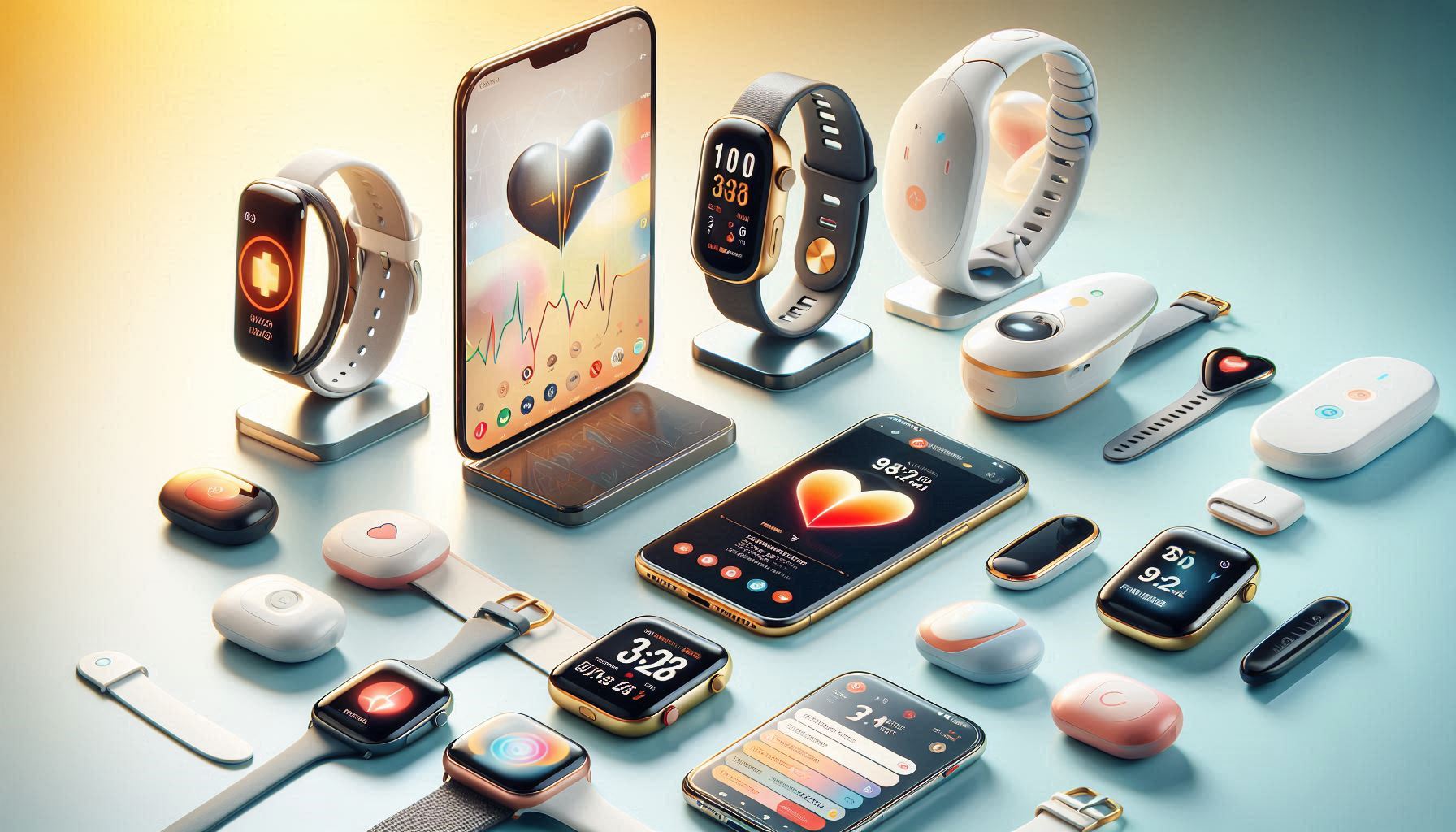A warm welcome to Vertevia.com and our article titled Best 5 Wearables For Hypertension Patients. Wearable technology makes managing hypertension a lot more convenient, especially for folks who want to stay on top of their health without constantly running to the clinic.
With the latest smartwatches and fitness trackers, you can monitor blood pressure, heart rate, and even track lifestyle habits, all right from your wrist. I’ve put together an all in one rundown of my favourite wearables for hypertension patients, plus some tips on how to pick the one that fits your needs best.
Getting Oriented: Why Wearables Matter for Hypertension
Managing hypertension isn’t just about prescriptions and check ups. Daily monitoring helps you see patterns, spot problems early, and share reliable info with your doctor. Wearables make this process easier and less stressful. Instead of writing everything down, these devices do most of the tracking for you, and many even offer reminders to take medication or move when you’ve been inactive for too long.
Current research shows that self monitoring can really give a boost to treatment adherence and encourage lifestyle changes. Wearables can give folks a clearer picture of how sleep, exercise, and stress impact their blood pressure. Plus, with many models now FDA cleared for blood pressure tracking, it’s getting safer and more accurate to rely on these gadgets.
The Best 5 Wearables for Hypertension Patients: My Top Picks
1.Omron HeartGuide
One of the few clinically validated blood pressure smartwatches you’ll find, Omron HeartGuide looks a lot like any standard watch, but it’s actually a tiny oscillometric blood pressure monitor. You just press a button, hold your wrist at heart level, and after a brief moment, you get your reading. It offers daily tracking for blood pressure, activity, and sleep, so doctors get a fuller picture of your health.
It’s approved by the FDA as a medical device, which gives extra peace of mind to anyone worried about data reliability. While the price may be higher than some other options, its accuracy and robust health tracking make it a smart investment for those who need trustworthy readings on a daily basis.
2.Samsung Galaxy Watch 6
If you’re looking for a more traditional smartwatch that doubles as a health monitor, the Galaxy Watch 6 is worth checking out. It uses a sensor based method called pulse wave analysis for blood pressure tracking (after a one time calibration with a regular cuff). You also get heart rate monitoring, ECG, sleep analysis, stress tracking, and easy syncing with Samsung Health.
Just keep in mind that continuous blood pressure readings aren’t automatic. You’ll need to manually check a few times a day. Still, its combination of everyday features and wellness tools mean you’re getting far more than just a single function health device.
3.YHE BP Doctor Pro
This is one of the few smartwatches that actually uses a cuff style mechanism built into the strap, so it offers readings closer to what you’d get in a clinic. The BP Doctor Pro also tracks SpO2, ECG, heart rate, exercise, and sleep.
It’s lightweight, has a clean user interface, and stores your measurement history, which comes in handy for regular discussions with your healthcare provider. The compact size and advanced features make it easy to wear all day and night, ensuring you don’t miss any important health changes.
4.Fitbit Sense 2
The Sense 2 doesn’t offer direct cuffless blood pressure readings yet, but it’s strong in overall heart health tracking, continuous heart rate, ECG, and even EDA sensors for tracking stress. Research is underway to add accurate blood pressure features, but for now, it excels in providing a big picture view, making it a solid choice for folks using an external BP monitor but wanting all day health insights from their wearable. Fitbit’s app is user friendly and packed with guidance to step up your wellness routines.
5.Withings ScanWatch
This hybrid smartwatch has a classic look and a ton of health features: ECG, SpO2, heart rate, and sleep tracking. While it doesn’t directly measure blood pressure, it syncs well with Withings’ own wireless blood pressure monitors, pulling all your vital stats into one easy app. For people who prefer an old school analogue watch style with next level cool health monitoring, this setup is pretty handy. It’s particularly appealing to those who want reliable readings but aren’t fans of flashy tech styles.
How Wearables Track Blood Pressure and Heart Health
The technology in these wearables can feel confusing, so I’ll break down the basics. Most blood pressure watches use two main approaches:
- Cuff Based Measurement: Just like a standard BP monitor, these use tiny inflatable cuffs in the watch band to measure systolic and diastolic pressure. They’re more bulky but tend to give the most reliable data.
- Cuffless Estimation: These rely on sensors tracking changes in your pulse wave or artery movement, mapping heart rate patterns and using algorithms (sometimes after initial calibration with a proper cuff). They’re less intrusive but can have small errors, especially if not calibrated well.
Heart rate monitoring, ECG (for irregular beats), and blood oxygen sensors add depth, giving a holistic view of cardiovascular health instead of just a single number. Many wearables now use mobile apps that can create visual charts, show trends, and even warn you if something looks off. This is super useful for discussing your results in detail with your doctor, since it’s easy to forget specific readings over weeks or months. Some apps can also help you set reminders or track additional habits, like salt intake or stress management, giving you even more control over your health journey.
Things to Think About Before Buying a Wearable for Hypertension
There’s a lot to choose from, and not every device is right for every person. When I’m helping someone pick a wearable for blood pressure, here’s what we consider together:
- Accuracy: Look for FDA cleared options or models that have clinical studies backing up their precision. Reviews from real users are also super important for spotting reliability issues.
- Ease of Use: Hypertension often affects older adults, so screens that are too small or settings that are complicated can be frustrating. Simple interfaces and clear instructions go a long way.
- Battery Life: Tracking falls apart if your device is always needing a charge, so longer battery life is a big plus, especially for busy or forgetful people.
- Data Sharing: If you want to send results straight to a family member or doctor, check what kind of sharing or syncing features the wearable has.
- Comfort and Style: You’ll be wearing this all day, maybe even overnight for sleep and night time blood pressure variation tracking. Something light, comfortable, and discreet feels a lot better for long term use.
Challenges and Limitations
No wearable replaces regular check ins with your healthcare provider. At home readings can sometimes be off if you’re moving or not sitting still, or if the device isn’t fitted to your wrist right. Keeping your device calibrated (and making sure you understand how to use it) is really important for getting data you can trust. If numbers look way off or you feel unwell, reach out to your doctor. Don’t rely only on wearable results.
Getting the Most from Your Wearable: Pro Tips
With a bit of know-how, you’ll get more accurate and helpful data:
- Take readings at the same time each day. Morning and evening works well for most people.
- Stay still when measuring. Sit quietly, relax, and keep your wrist at heart level.
- Sync your device regularly so your app is always up to date and you never lose important data.
- Don’t ignore other health data. Track activity, sleep, and stress too. These all impact blood pressure.
Over a few weeks, trends matter much more than single outlier numbers. This gives your doctor much better insight into your real blood pressure control. Also, remember to update your device and app software regularly, as updates often include improved accuracy or new features that can give you that extra edge in tracking your health. Building a habit of check ins and syncing data not only helps your healthcare team but also encourages you to stick with your wellness goals.
6 Frequently Asked Questions
These questions pop up all the time when people start researching wearables for hypertension:
1.Question: Can I rely on a smartwatch instead of a traditional blood pressure cuff?
Answer: Most doctors still recommend a traditional cuff for diagnostic use, but many wearables are accurate enough for daily monitoring and trend tracking. Always calibrate your device (if needed) and check with your doctor for advice.
2.Question: How often should I check my blood pressure with a wearable?
Answer: Most people do well with twice daily measurements, once in the morning and once at night. If your device can alert you, you might take extra readings when feeling unwell.
3.Question: Are these wearables safe for older adults?
Answer: Yes, most major brands focus on safety and ease for older users. If vision, dexterity, or technical comfort are concerns, look for large screens and simple navigation apps.
4.Question: Is the blood pressure data from these devices private?
Answer: Reputable brands use secure apps, but always review their privacy policy. You can opt to share results with doctors or family if you want, but it’s your choice.
5.Question: Do wearables work for people with heart rhythm disorders?
Answer: Some wearables with ECG or Afib detection are helpful, but irregular rhythms can sometimes confuse the blood pressure sensors. Your doctor can help you pick a model that works best for your specific health profile.
6.Question: Can I use a wearable to change or stop my hypertension meds?
Answer: No. Always talk to your doctor before making any changes. Use your wearable’s data as an extra tool, never a replacement, for medical advice or medication management.
Finding the Right Fit for Your Health
Wearables give you tons of useful insight, making hypertension management more hands on, proactive, and clear. Whether you go with a full featured smartwatch or a dedicated blood pressure tracker, it’s all about making daily health checks a regular habit. Remember to ask questions, read reviews, and talk with your doctor about what features are most important for you. Staying informed and making tech work for you can bring a lot more confidence and peace of mind to your blood pressure adventure. If you stick with regular usage and keep up with new features, these handy tools can become an important part of your healthy lifestyle, making daily wellness a lot more accessible and manageable.
Our Thanks!
Many thanks for taking the time to read through this article on the Best 5 Wearables For Hypertension Patients. It really helps our website when people read our content. Why not take a look at our blog? Or you could read our related article which is titled Best 6 Wearables For Managing Chronic Conditions.
Please let us know in the comments which type of wearable health tech device you are currently using or plan to buy in the future! The comments section is just underneath this article!
**Here is a bit of transparency. Our website www.vertevia.com does contain affiliate links and Amazon links. So, if you did make a purchase through the website, we may receive a small commission. This is at no extra cost to you whatsoever. It’s just a way for you to support us as we continue to bring you top quality content**
All the best!
Eamon





